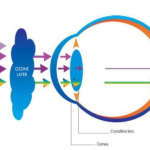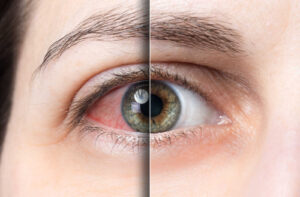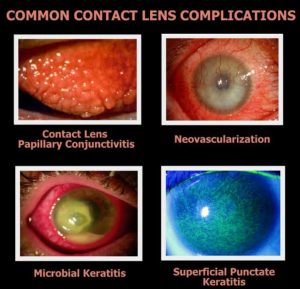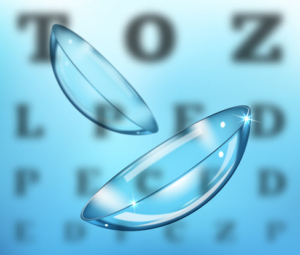Introduction
Ultraviolet (UV) radiation from the sun is a well-known environmental hazard that can damage
the eyes over time. Prolonged exposure to UV rays has been linked to various eye conditions,
including cataracts, photokeratitis (a sunburn-like condition of the cornea), and even certain
types of eye cancers. While sunglasses and wide-brimmed hats are commonly recommended
for UV protection, another option has emerged in recent years: UV-blocking contact lenses.
These specialized contact lenses are designed to filter out harmful UV rays, offering an
additional layer of defense for the eyes. But how effective are they in real-world clinical
settings? Do they provide enough protection to replace traditional UV-blocking eyewear, or
should they only be used as a supplementary measure? This article explores the science behind
UV-blocking contact lenses, their benefits, limitations, and whether they are clinically proven to
protect eye health.
Understanding UV Radiation and Its Effects on the Eyes
Before diving into UV-blocking contact lenses, it’s important to understand the different types
of UV radiation and how they affect the eyes:
�� UV-A (315–400 nm): Penetrates deep into the eye, potentially contributing to retinal damag
and macular degeneration over time.
�� UV-B (280–315 nm): Mostly absorbed by the cornea and lens but can cause photokeratitis (
painful corneal sunburn) and accelerate cataract formation.
�� UV-C (100–280 nm): The most dangerous, but fortunately, it is almost entirely absorbed b
the Earth’s ozone layer.
Unlike the skin, the eyes do not develop a tolerance to UV exposure—each incident of excessive
UV exposure adds to cumulative damage. This is why consistent protection is crucial.
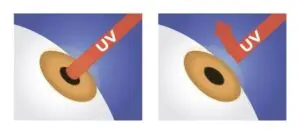

How Do UV-Blocking Contact Lenses Work?
UV-blocking contact lenses are made with special materials that absorb or reflect UV radiation
before it reaches the cornea and inner eye structures. These lenses are classified into two
categories based on their level of protection:
�� Class 1 UV-blocking lenses – Block at least 90% of UV-A and 99% of UV-B rays.
�� Class 2 UV-blocking lenses – Block at least 50% of UV-A and 95% of UV-B rays.
Most major contact lens brands (such as Acuvue, CooperVision, and Bausch + Lomb) offer UV
protection in some of their lenses. However, not all contact lenses have this feature, so users
must check the product specifications.
Evidence Supporting UV-Blocking Contact Lenses
�� Reduced Risk of Cataracts: A study published in Investigative Ophthalmology & Visual Scienc
found that UV-absorbing contact lenses could decrease the amount of UV radiation reaching
the lens of the eye, potentially slowing cataract formation.
�� Protection Against Photokeratitis: Research indicates that these lenses can help preven
acute UV damage, such as photokeratitis, particularly in high-exposure environments (e.g.,
skiing, beach activities).
�� Complementary Protection: Since contact lenses cover only the cornea and part of the scler
(the white of the eye), they do not protect the eyelids or surrounding tissues. However, when
combined with sunglasses, they provide more comprehensive UV defense.
Limitations and Concerns
�� Partial Coverage: Contact lenses shield only the area they cover, leaving the conjunctiva
eyelids, and surrounding skin exposed to UV damage.
�� Variable Protection Levels: Not all UV-blocking lenses are created equal—Class 1 lenses offe
better protection than Class 2.
�� False Sense of Security: Some wearers may mistakenly believe that UV-blocking contact
eliminate the need for sunglasses, leading to inadequate overall protection.
�� Lack of Long-Term Studies: While short-term benefits are documented, more research i
needed to confirm long-term effectiveness in preventing conditions like macular degeneration.
Expert Recommendations
The American Academy of Ophthalmology (AAO) and the World Health Organization (WHO)
acknowledge that UV-blocking contact lenses can be beneficial but emphasize that they should
**not replace sunglasses or hats**. Instead, they should be used as part of a broader sun
protection strategy.
Who Should Consider UV-Blocking Contact Lenses?
�� Outdoor Enthusiasts: Athletes, hikers, and beachgoers who spend extended time in the sun.
�� People with Light Sensitivity: Those with conditions like photophobia may benefit fro
additional UV filtering.
�� Post-Surgical Patients: Individuals recovering from cataract surgery (especially those wit
non-UV-blocking intraocular lenses) may need extra protection.
�� High-Risk Professions: Lifeguards, construction workers, and pilots, who face prolonged U
exposure.
However, they are not a necessity for everyone—standard contact lens wearers who already
use sunglasses with UV protection may not need them.
Conclusion: Should You Use UV-Blocking Contact Lenses?
UV-blocking contact lenses provide a measurable degree of protection against harmful UV
radiation, particularly for the cornea and lens. Clinical evidence supports their role in reducing
UV-induced damage, but they are not a standalone solution. For optimal eye safety, they
should be paired with high-quality UV-blocking sunglasses and a wide-brimmed hat.
If you spend a lot of time outdoors or have heightened sensitivity to sunlight, UV-blocking
contacts could be a worthwhile addition to your eye care routine. However, always consult your
eye doctor to determine whether they are the right choice for your specific needs.
Ultimately, while these lenses are a helpful innovation, they are just one piece of the puzzle in
safeguarding your eyes against the sun’s harmful rays.







